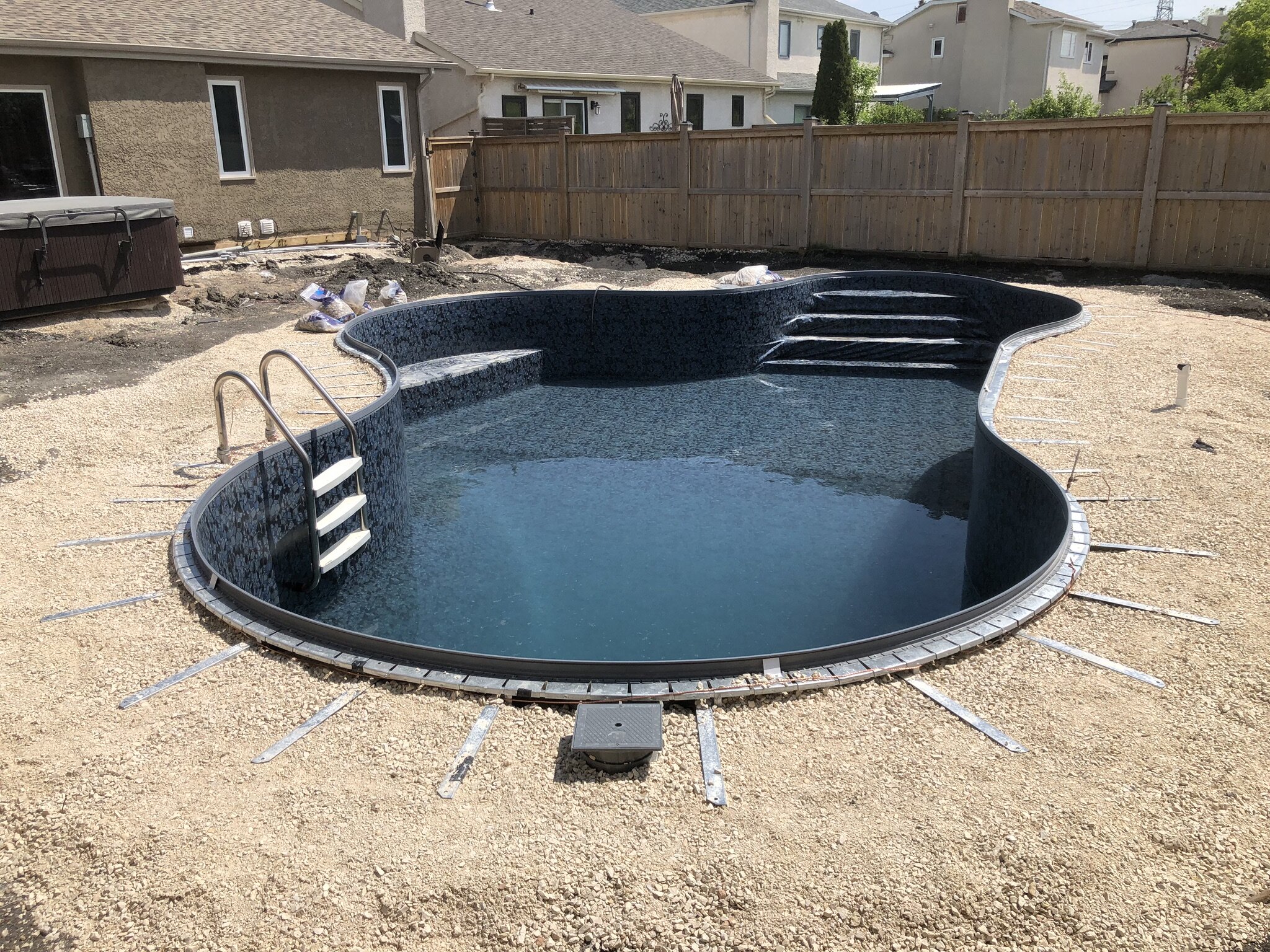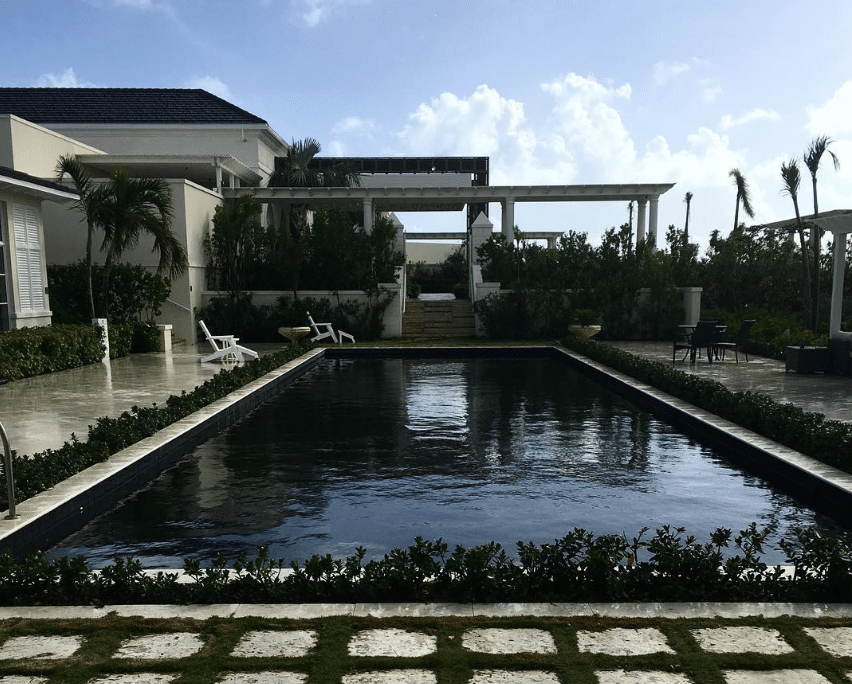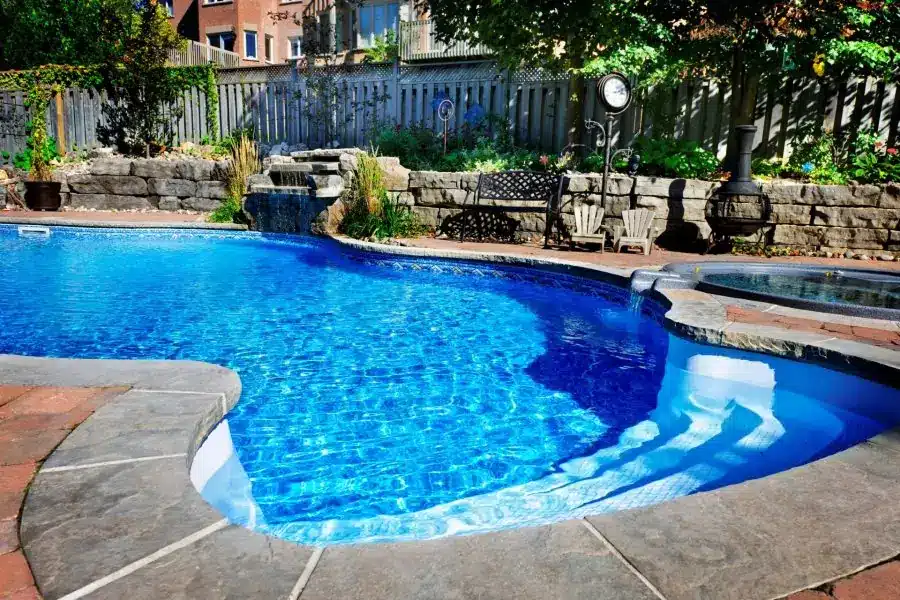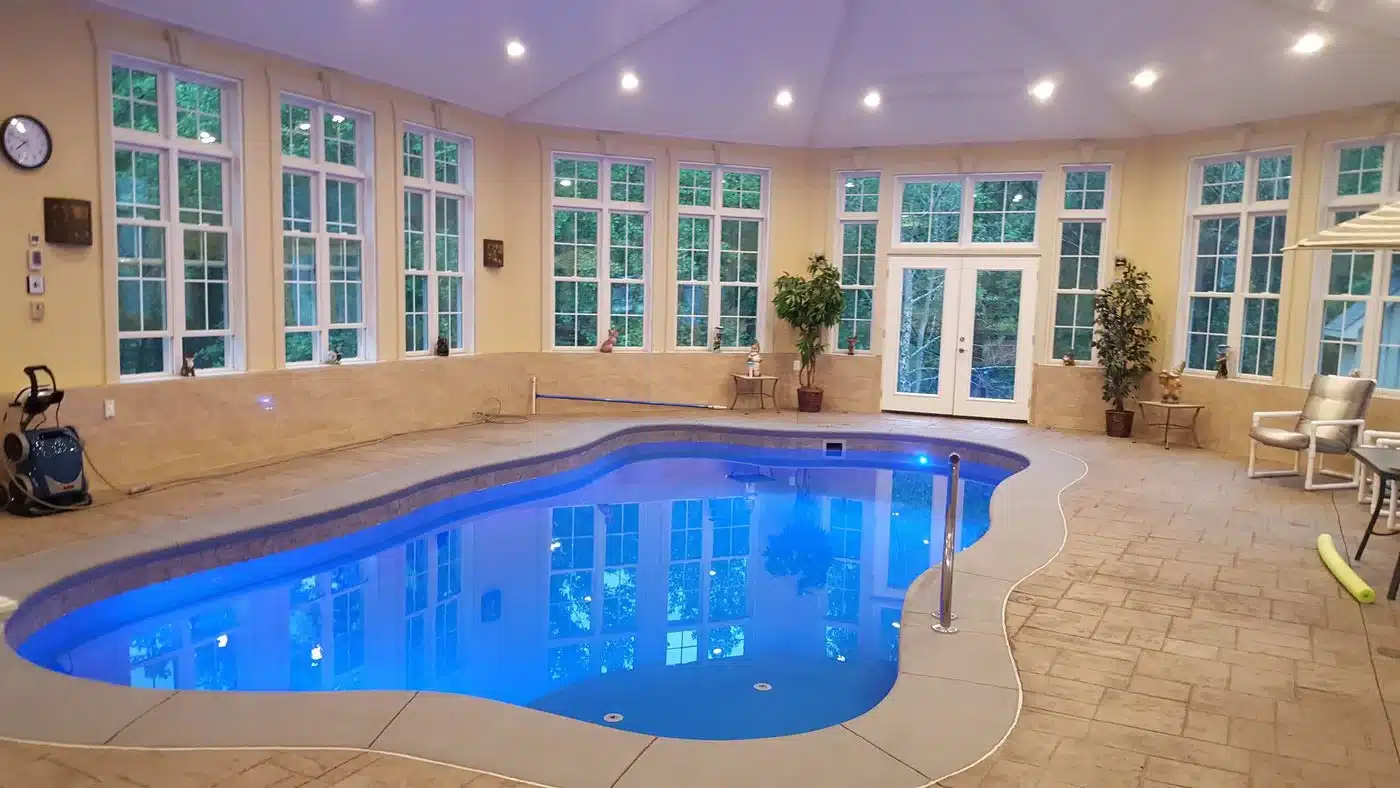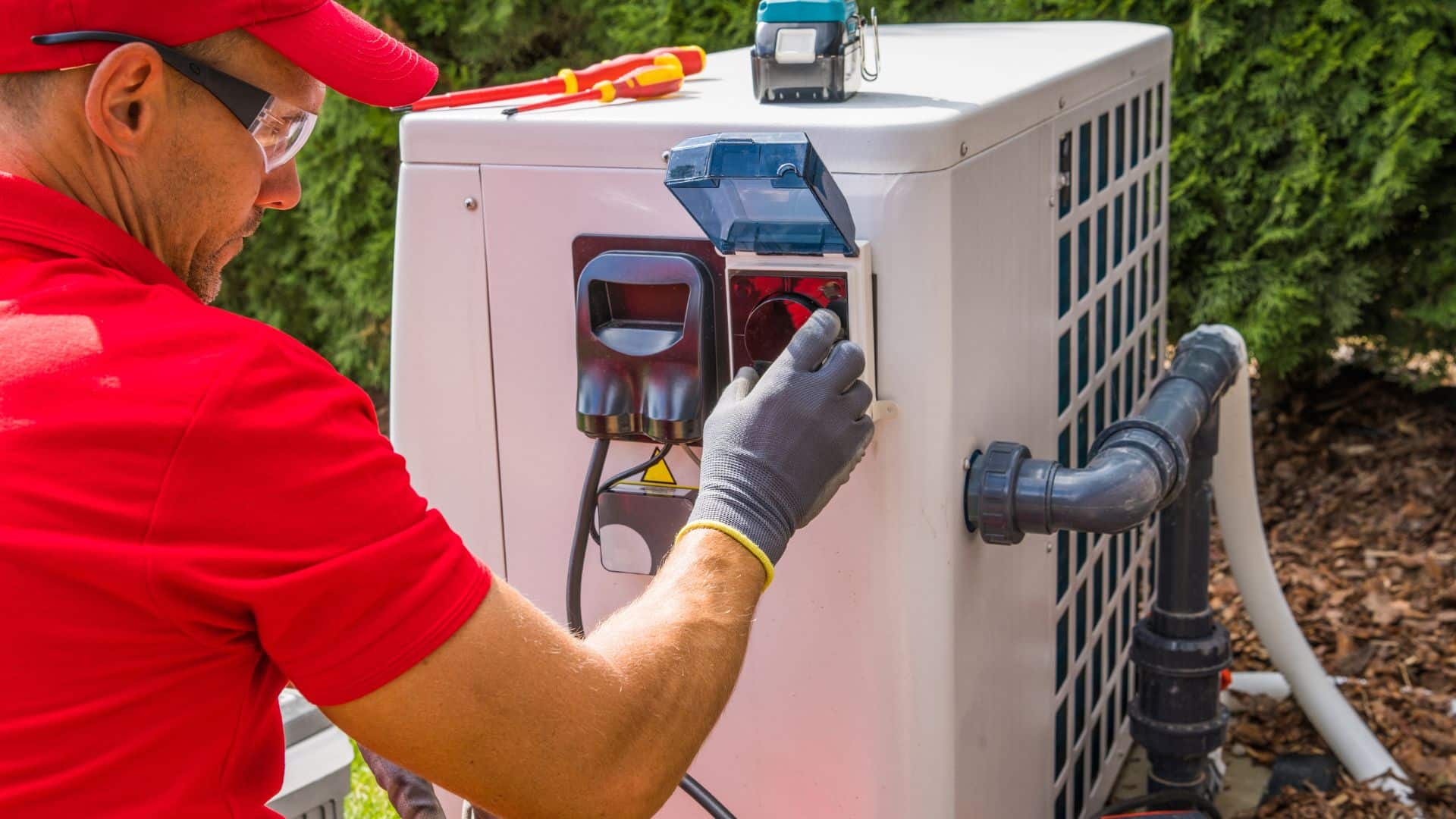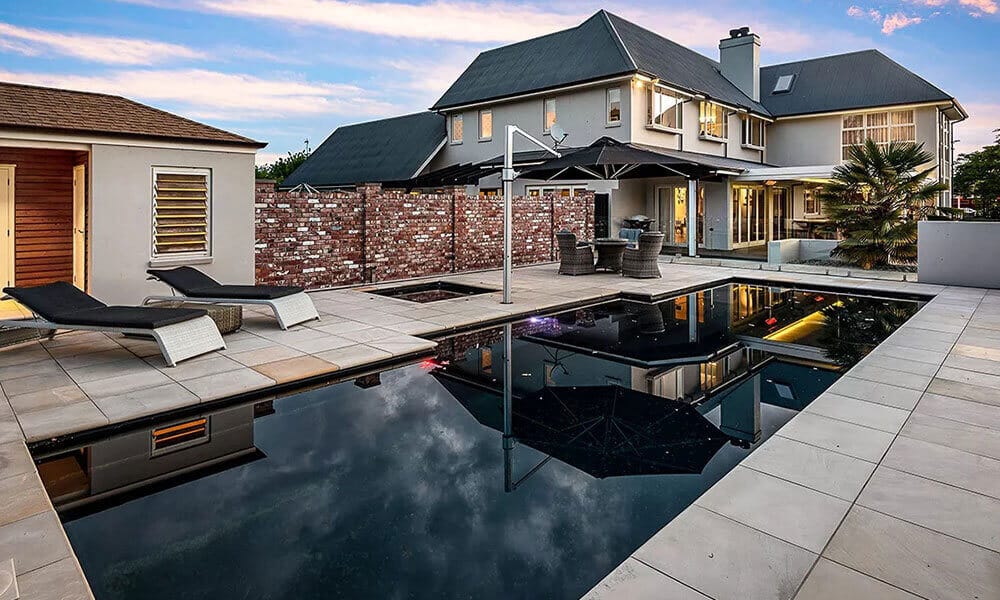What Materials Are Used in The Construction of a Black Bottom Pool?
The black bottom pool is a tribute to the confluence of beauty and ingenuity in modern construction in the world of opulent outdoor aesthetics. They are built using a symphony of components that come together to form an amazing work of art. These mesmerizing aquatic wonders, which are frequently seen in upmarket resorts and homes, are the product of careful planning and the use of particular materials that bring out their distinctive qualities. The fascinating world of black bottom pools is explored in this blog, along with the components that make these pools such a remarkable addition to any landscape. At the heart of this symphony are the carefully chosen materials that give the pool its unique character.
List of Materials Used in Constructing a Black Bottom Pool
1. Concrete: The Foundation of Stability

The attractiveness of black bottom pools is based on a foundation of concrete. Concrete, which is renowned for its strength, adaptability, and flexibility, is used as the main component of the pool’s structural shell. Excavation, strengthening using steel rebar to make the pool shape, and then spraying or pouring concrete to create the shell are common steps in the building process. The remarkable black color is not, however, due only to concrete. Instead, the components combined with concrete give black bottom pools their distinctive appearance.
2. The Black Canvas: Creating Pebble and Aggregate Blends
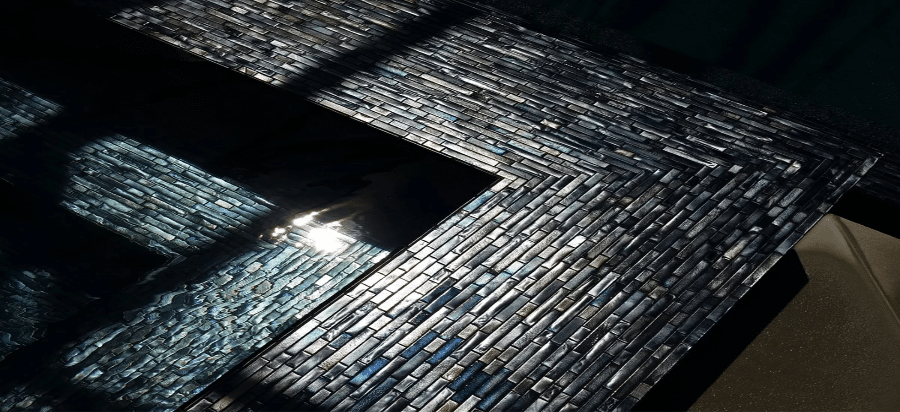
These pools’ hypnotic black appearance is made possible by mixing concrete with dark-colored stones, sediments, and paints. Dark pebbles, including dark grey stone, add to the pool’s distinctive aesthetic appeal. During construction, these components are finely powdered and added to the concrete mixture to provide a uniform distribution of color across the pool’s interior. Alternatively, we can use the readymade black canvas to give it an aesthetic black color.
3. Pool Liners: Obtaining Confort and Consistency
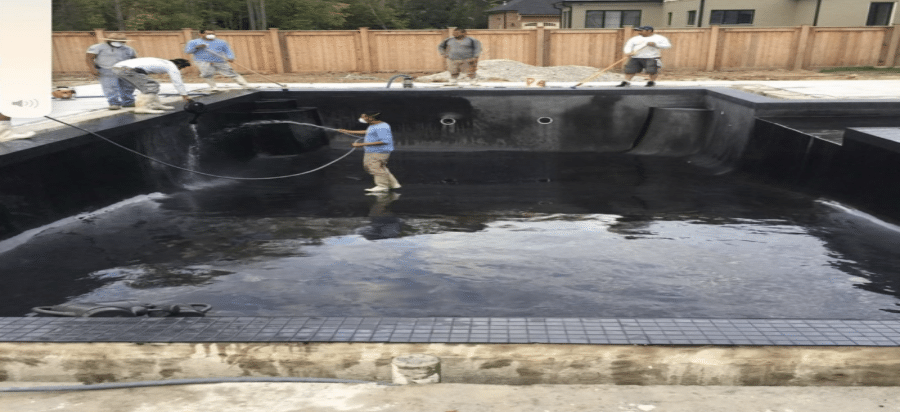
The pebble-aggregate blend finish can sometimes be replaced with pool liners. Pool liners are sheets of vinyl or other artificial material that are shaped specifically to suit the inside of the pool. These liners are available in several hues and textures, including black, and provide swimmers with a smooth look and a cozy surface. Pool liners provide a speedier installation procedure than conventional construction, but they might not be durable or as aesthetically pleasing as the pebble-aggregate blend finish.
4. Elegant Framing with Natural Stone Coping and Decking
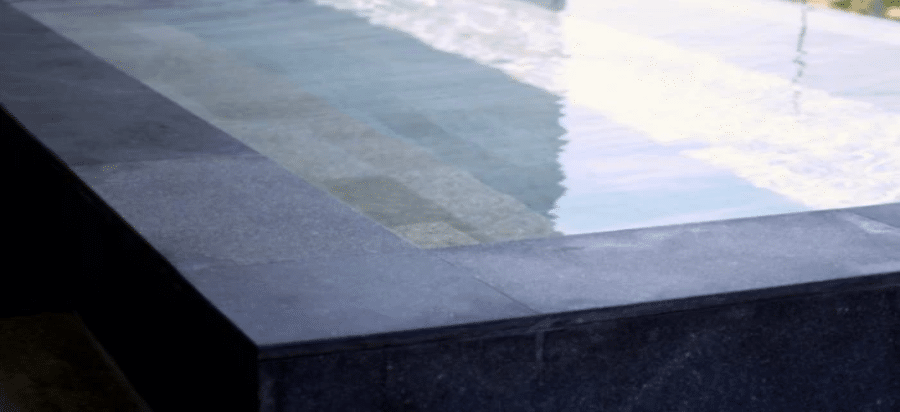
The choice of materials for the pool’s coping and decking serves to emphasize the beauty of a black-bottomed pool further. Coping, the material that lines the upper edge of the pool, and decking, the space around the pool, are crucial in relating the pool’s aesthetics to the surroundings. Slate, bluestone, or travertine are examples of natural stone materials that are frequently used for their earthy tones, which go well with the dark pool interior and heighten the overall aesthetic effect.
5. Lighting and Reflection: Increasing the Aesthetics
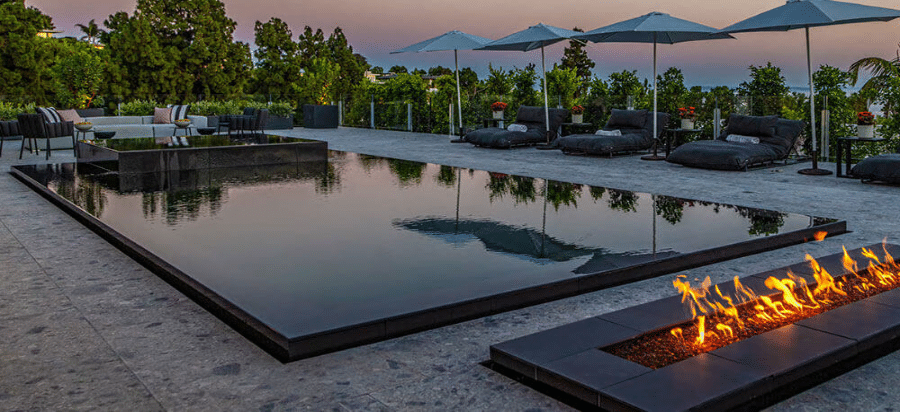
A pol with a dark bottom can be seductive at any time of day. A pool may become a mesmerizing nocturnal display with carefully arranged lighting fixtures. A brilliant appearance that plays off the dark interior of the pool may be produced by underwater LED lights put within the pool’s construction, creating a striking contrast that mesmerizes observers. Additionally, the reflected qualities of the black bottom surface mix with the surrounding environment, architecture, and fire features to create a visual symphony that gives the pool area greater depth and personality.
6. Waterproofing Materials
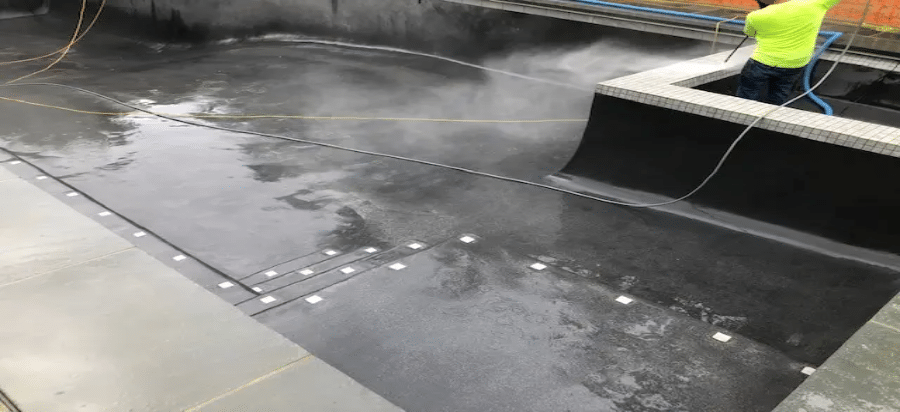
Waterproofing materials are crucial for the building of black bottom pools because they protect the beauty and life of the pool in addition to being a technical need. Homeowners and designers may build an enchanted sanctuary that is durable and beautiful by making the correct material choices and collaborating with skilled craftspeople. There are different waterproofing materials like sheet membranes, Cementitious waterproofing, liquid-applied membranes, Polyurethane coatings, etc.
7. Rebar
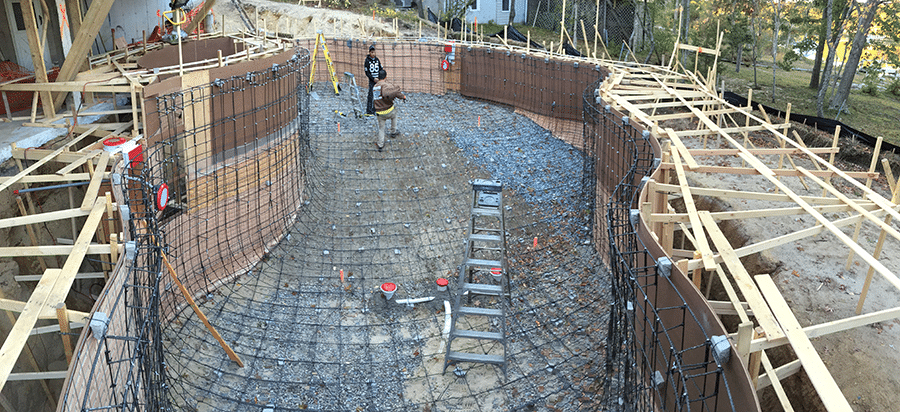
The term “reinforcing bar” or “Rebar” is used to refer to a material that is crucial to the building of black bottom pools and other concrete constructions. It provides strength, stability, and structural integrity to the pool’s base, acting as the backbone of durability. Rebar is essential to the complex process of building a black bottom pool and serves purposes beyond simple reinforcement. It helps prevent cracking and deformation. It significantly contributes to the longevity and resilience of the black-bottomed pool. It works well in conjunction with other substances, including concrete, stones, aggregates, and colors.
Conclusion
A black bottom pool’s creation is a monument to the skillful blending of innovation, style, and workmanship. The development of a compelling aquatic refuge that radiates both beauty and endurance is aided by the careful selection and deft fusion of elements. Black bottom pool is an excellent illustration of how contemporary/ traditional design can combine innovation and aesthetics to provide a genuinely one-of-a-kind and intriguing outdoor area.
These pools’ enticing attractiveness is a result of the use of materials like concrete, dark-colored pebbles, aggregates, pool liners, and natural stone for coping and decking. It’s exciting to consider how technology and architectural advancements in the future can improve the grace and allure of black bottom pools, resulting in the development of even more magnificent sanctuaries in the fields of architecture and luxury living.

